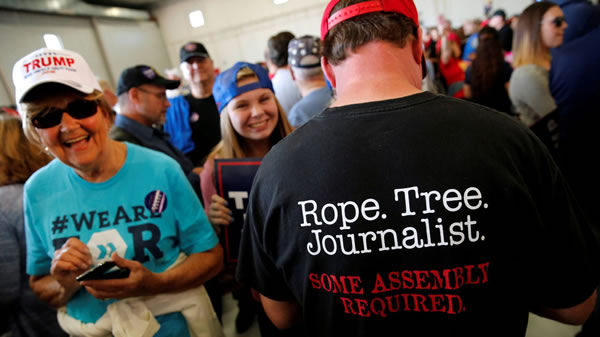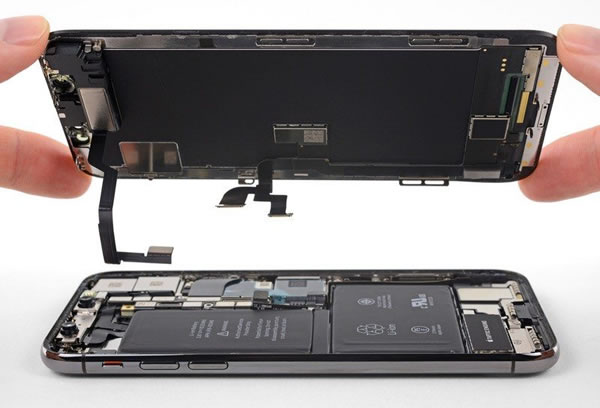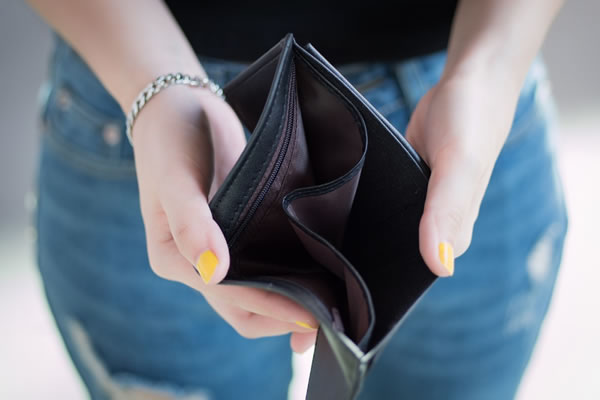Click the photo to see it at full size.
Category: Uncategorized








It’s not autumn until I’ve caught the scent of the “Three C’s”: cinnamon, cloves, and cat poop.
Credit-Card Spending Limits in the Crosshairs as Issuers Grow Cautious
Capital One Financial Corp. and Discover Financial Services said last week they have become more cautious in how they’re handling credit limits. The two lenders said they don’t currently see signs of deterioration in consumers’ ability to pay their debts but do question how much longer the economic recovery will last.
“In so many ways, one can’t help but be struck by…just how good the economy [at] this point is,” Capital One Chief Executive Richard Fairbank said on the company’s earnings call. “And in some ways, it almost feels too good to be true.”
Credit-card limits have long served as an indicator of lenders’ outlook. During the last financial downturn, card issuers slashed credit limits to avoid incurring new losses. Around 2015, many lenders began increasing limits as they courted more balances and interest income.
Capital One and Discover are gauges of many Americans’ ability to handle debt. Discover generally doesn’t market to affluent customers, and Capital One has a large number of customers with less-than-pristine credit scores, making both companies a window into a part of the economy that is often the first to show cracks. Some 33% of Capital One’s domestic card balances, for example, are owed by subprime borrowers, according to the bank.
Existing-home sales slump to a near 3-year low as buyers back out
Big picture: The Realtors blamed another stagnant month in the housing market on rising mortgage rates, higher prices and the supply stranglehold. But it’s also likely that many would-be buyers are dropping out of a market that’s become too competitive, expensive and unsatisfying, especially as conditions in the rental market ease up. The national median rent declined compared to a year ago in September, Zillow ZG, +2.85% said Thursday. That was the first yearly decline since 2012, and reflects a glut of supply, with more to come.
What they’re saying: “Recent sluggishness seems increasingly driven by softer demand from would-be home buyers in the face of two emerging trends: falling rents and rising mortgage interest rates,” said Zillow Senior Economist Aaron Terrazas. “It all adds up to a situation in which supply-side factors are becoming less critical in driving home sales as they give way to softening demand. There’s still a lot of energy left in the housing market, but the rapid rise of the past few years has clearly begun to level off.”
NAR Chief Economist Lawrence Yun now forecasts that existing-home sales will be 1.6% lower in 2018 than last year. Economists at mortgage financier Fannie Mae are even more bearish: they’re projecting a 2% decline.
See also: U.S. new home sales near two-year low as mortgages rates rise
U.S. retail sales are soft for the second month in a row despite strong economy
What happened: After a string of strong sales, bars and restaurants saw a big dropoff. Sales sank 1.8% in September to mark the biggest decline since the end of 2016.
Still, restaurant sales are up a strong 7.1% over the past 12 months.
Sales also fell sharply at gas stations and department stores.
Department stores have been losing ground for years to internet retailers such as Amazon AMZN, +0.02% .
Sears US:SHLD is the latest victim of the switch from traditional brick-and-mortar shopping to online sales. The giant and long established department store is entering bankruptcy proceedings after struggling for decades to reinvent itself.
Sales at internet retailers climbed 1.1% in September. Auto dealers posted a 0.8% increase.
Big picture: The U.S. appeared to enter the fall with strong momentum, but the second straight weak retail sales report suggests the economy might have cooled off a bit in the third quarter. The prospect of the Federal Reserve raising interest rates and last week’s big decline in the U.S. stock market could add to the anxieties.
Households are in good shape, however. The unemployment recently fell to a 48-year low and layoffs are also at the lowest point in nearly half a century. Most Americans who want a job have found one, giving them plenty of money to spend. The result: consumer confidence is at a two-decade high.
Keep this in mind: Consumer confidence is at a two-decade high, yet credit card companies’ confidence in consumers is low.
Dollar dips as US retail sales misses expectations
The U.S. dollar dipped on Monday after retail sales data for September missed economists expectations, and as benchmark U.S. Treasury yields consolidated after last week hitting their highest level in seven years.
U.S. retail sales barely rose in September as a rebound in motor vehicle purchases was offset by the biggest drop in spending at restaurants and bars in nearly two years. Retail sales edged up only 0.1 percent in the month. Economists polled by Reuters had forecast an increase of 0.6 percent.
We had softer than expected retail sales, that was another leg of dollar selling, said Win Thin, global head of currency strategy at Brown Brothers Harriman in New York.
It comes after data last week showed that U.S. consumer prices rose less than expected in September, held back by a slower increase in the cost of rent and falling energy prices, as underlying inflation pressures appeared to cool.
Upgrade? No Thanks. Americans Are Sticking With Their Old Phones
Americans are holding on to their smartphones for longer than ever.
Pricier devices, fewer subsidies from carriers and the demise of the two-year cellphone contract have led consumers to wait an average of 2.83 years to upgrade their smartphones, according to data for the third quarter from HYLA Mobile Inc., a mobile-device trade-in company that works with carriers and big-box stores. That is up from 2.39 years two years earlier.
Apple Inc. AAPL +0.67% iPhones traded in during the period were an average of 2.92 years old, and those phone owners held on to them longer than Android users, HYLA’s data through the third quarter show.
Smartphone makers have launched increasingly pricey phones in recent years, with some premium devices costing more than $1,000. Apple’s highest-end phone, the iPhone XS Max, costs $1,099.
That has meant that some buyers try to make their phones last longer. Many families pass down to their children smartphones that are fully paid for or hand them to other relatives on their plans.
And here’s an observation from LinkedIn:

With Apple and others having spent the last decade churning out increasingly sophisticated handheld computers at such a fast rate, a slowing or plateau in the pace of adoption of new mobile phones was inevitable. We all can get more mileage out of these shiny status symbols.
I recently visited an independent iPhone repair shop in suburban Des Moines. It was in a guy’s house in lieu of the front parlor and was an incredible sight — bins full of parts meticulously stored along the walls surrounding his workbench and computer bay. In the short time I was there, a few other customers arrived. To watch him work made me think of an artisan cobbler from an earlier century. It was a more successful and satisfying — and transparent — experience than I’ve had with a Genius Bar or other retail. This has been the man’s sole biz for several years.
The smartphone economy has its fascinating little corners.
— Kyle Munson, Senior Writer at Principal Financial Group








